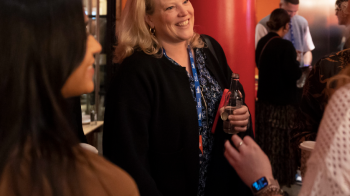IAB UK advocates for greater transparency with latest release of content and native guidelines
The update is a result of the growth of social media advertising, rapid rise of influencer marketing and ease of self-publishing.The update is a result of the growth of social media advertising, rapid rise of influencer marketing and ease of self-publishing.
The IAB first published its disclosure good practice guidelines for native ad formats (e.g. in-feed and third-party recommendation units) in 2014 with a second phase that focused on online content-based advertising in 2015. The latest version combines and updates both phases along with previously-published guidance on paid promotions in social media.
The primary aim of the guidelines is to set out clear and practical steps that brand owners, publishers and marketers can take to help consumers easily identify content-based advertising, particularly in photo- and video-based platforms, audio and influencer marketing.
Supported by ISBA – representing the leading UK advertisers, the Association for Online Publishers (AOP) and the Content Marketing Association (CMA), the guidelines help advertisers meet the requirements of the CAP Code, the UK advertising industry’s rules for non-broadcast marketing communications that are enforced by the Advertising Standards Authority (ASA).
The updates reflect changes in online behaviour and media usage, and show how existing principles apply to new and growing advertising environments and approaches – such as influencer marketing.
Key guidelines for content-based and native advertising:
-
Provide consumers with visual cues, or verbal brand mentions in audio formats, so consumers immediately know that they’re engaging with marketing content.
-
e.g. brand logos and design features (such as fonts or shading) for native ad units that clearly distinguish them from surrounding editorial content
-
Use a clear, up front label and/or verbal descriptor (as appropriate) to show there’s a commercial arrangement in place and identify the content as marketing. One option where space is limited (e.g. in social media) is the label #ad.
-
Take visibility into account and design disclosures so that they are clear and prominent in different formats and devices (e.g. on mobile and in-app as well as desktop)
-
Ensure the content of the advertising adheres to the CAP Code and all other relevant legislation.
“It’s essential when brands are using content and native advertising to reach their audiences that they understand the rules about disclosure, and how to comply with them in practice,” said Christie Dennehy-Neil, Senior Public Policy Manager at the IAB. “Transparency is vital, not just because it’s required by the advertising rules, but because it is key to audience trust, which is so important for brands and anyone they partner with to create or publish advertising content.”
Native and content advertising spend¹ – including paid for sponsorships, advertisement features and in-feed distribution – hit £563 million in the first half of 2017, accounting for 28% of display ad spend, 82% of which is in-feed.
Richard Reeves, Managing Director at the AOP said: “We are always supportive when industry standards are reviewed and evolve in-line with changing consumer behaviour and best practice. As the loss of publisher revenue continues to increase due to ad blocking, there has been a growing demand for engaging and interactive ads that don’t disrupt the user experience, which content marketing and native formats can provide. The updated guidelines firmly put the user first, ensuring that publishers and advertisers maintain and continue to strive for a two-way relationship with users built on transparency and trust.
James Erskine, Director at Social Circle, added, “Influencer marketing depends on trust, and disclosure is a key part of helping creators and brands to produce great content that is authentic and that people love. Having clear guidelines like these helps everyone ensure they are being open and transparent with their audiences.”
A definitions framework for content and native advertising can be found here.
¹ IAB/PwC H1 2017 Digital adspend study
Related content
Sinead Coogan Jobes joins IAB UK to lead policy & public affairs
Learn moreGovernment issues statement on LHF online ad restrictions
Learn moreOnline Safety Act comes into effect
Learn moreIAB UK to support SMEs in taking their digital ad campaigns to the next level
Learn more
Rediscover the joy of digital advertising
Champion connections instead of clicks. Capture audiences' imaginations, not just their attention. Boldly find your own beat instead of letting tech set the pace. It’s time to rediscover the joy of digital.



